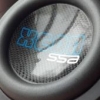
Difference Between Active and Passive?
By
Duran, in Subwoofers / Speakers
-
Recently Browsing 0 members
No registered users viewing this page.
-
-
Recent Topics
-
- 6 comments
- 1,695 views
-
- 20 comments
- 434 views
-
- 400 comments
- 34,508 views
-
- 3 comments
- 162 views
-
- 4 comments
- 284 views
-
- 2 comments
- 798 views
-
-
-
Recent YouTube Posts



